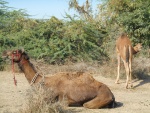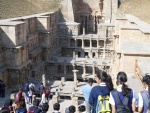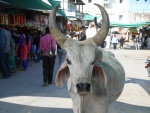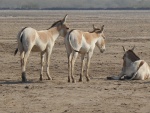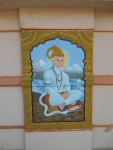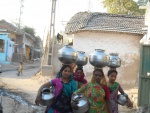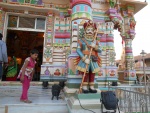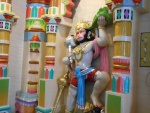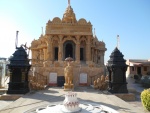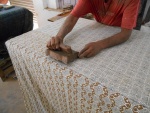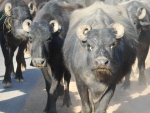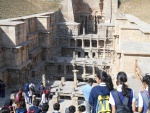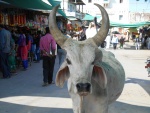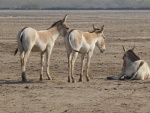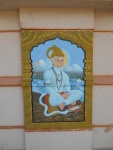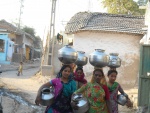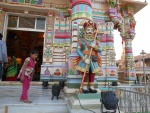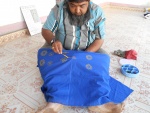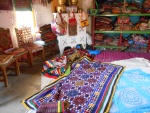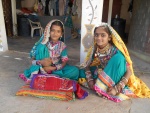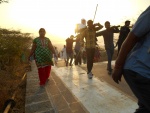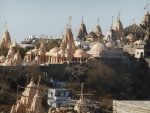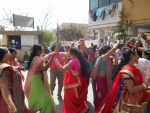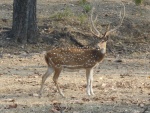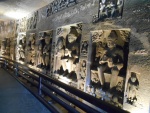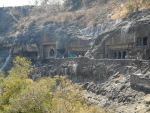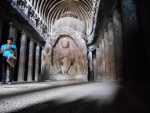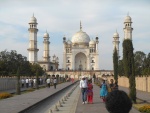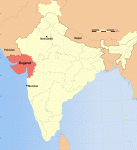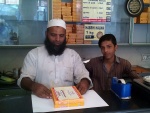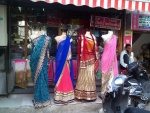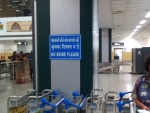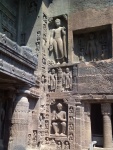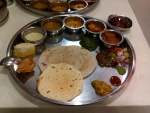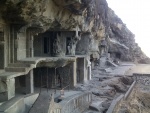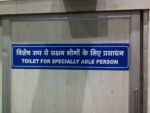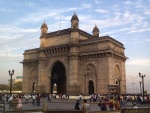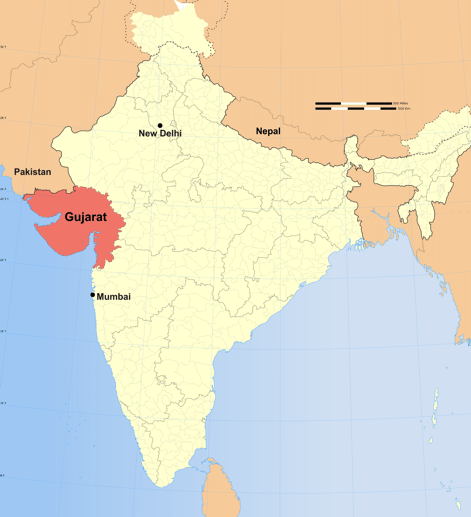 India must be the most diverse country in the world. Dozens of languages, religions, and different races and customs mean that each of our trips to India has been different. This was our 7th trip to India together, and we decided to visit Gujarat. This state has less tourism than other parts of India we’ve visited. The lack of good tourism information made the planning a bit challenging, but also meant many wonderful and unanticipated surprises.
India must be the most diverse country in the world. Dozens of languages, religions, and different races and customs mean that each of our trips to India has been different. This was our 7th trip to India together, and we decided to visit Gujarat. This state has less tourism than other parts of India we’ve visited. The lack of good tourism information made the planning a bit challenging, but also meant many wonderful and unanticipated surprises.
We landed in Ahmedabad, the state capital and largest city in Gujurat, and immediately were taken with the colorful saris worn by the women. Gujarat grows a lot of cotton and is known for its textiles, and for the crafts maintained in many villages where artisans continue their centuries old weaving and embroidery traditions. Our hotel had a basin with roses floating in it in the room; a lovely welcome and a reminder of the tradition of hospitality in India.
Ahmedabad’s old city is a warren of old wooden havelis (mansions) in various states of disrepair. Beautiful mosques and temples are scattered around. We took a brief tour and then wandered on our own, avoiding motorcycles, cows, and trying to ignore the cacaphony of car horns on all the larger streets. Indian drivers seem to believe in driving with sonar, and that leaning on their horn as often as possible will keep them safe.
While in Ahmedabad we also took a trip to the Adalaj Vav step well, an amazing site about 20 min. from town. Every wall of the well was covered with intricate carvings, which we tried to focus on in spite of the gorgeous saris, sewed with mirrors, bright purples, greens and oranges, and embroidered hems, in every direction. On the way out of town we passed one elephant, 3 camel carts, 2 buffalo carts and innumerable cows and goats, and began to settle in to the rhythm of India.
Also near Ahmedabad is the ashram where Mahatma Ghandi studied. The story of his work there is an inspiring reminder of the difference that one person with a vision can make in the lives of millions. Another highlight was the Calico Museum, a private collection of outstanding textiles. However, one can only visit the museum with a guide and the tour is highly regimented. We had to laugh when the guide, who described many of the weavings with religious fervor, told us to just “pass through- no time to stop – we have only 2 hours and you must see 40 rooms! (We dubbed her the museum nazi, in deference to the Seinfeld character). Well worth it in spite of the rushed visit. While the guide did go quickly, her respect for the fabrics, created by people with patterns passed down through generations without ever writing them down, built our respect for this amazing art. We later visited the Salwyas Folk Museum, to see even more of the crafts of the region.
Our great driver quickly got the idea that we were not interested in tourist – focused food, and almost every day directed us to a Guajarati thali. Sweeter than the food in other parts of India, and full of new flavors, we had long delicious lunches each day. Phil has a list of new dishes he is determined to master.
From Ahmedabad we headed north to see the Ravi step well, an even more ornate and well preserved step well, and visited an amazing Jain temple complex. Throughout Gujarat, the Jain, Swaminarayan and Hindu temple complexes were evidence of the great wealth of many Gujaratis who have left India and sent donations back. Each one was full of ornate carvings and beauty.
By day 3 of our trip we realized that we had become quite used to camel carts and, herds of cows, buffalos, and goats blocking the road. At one point we stopped at a temporary campsite of Rajasthani herders, resting their camels as they drove their goats to water sites. From Ahmedabad we went to Bajana, on the edge of the Little Ran of Kutchch. We took a jeep safari to see the last wild asses in India as well as the abundant bird life that lives on the salt flats. Flamingos, waterfowl and eagles, as well as several species of antelope, somehow survive in the arid salty desert here.
From Bajana we headed further west to Bhuj, the gateway to the Banni tribal area known for its handicrafts. On the way we stopped at a Hanuman temple, which we had not seen in other parts of India but that are ubiquitous in Gujarat. Hanuman is the monkeydiety, (an incarnation of the god Shiva) who helped Lord Rama in the Mahabarata sagas. Each part of India has a somewhat different set of favored Hindu gods, and we tried (not too successfully) to learn how to identify each type of temple from the road.
Bhuj has a good museum, atmospheric old palaces badly damaged in the 2001 earthquake (measuring 6.9), and a huge Swaminarayan temple. Most notably, here we were introduced to dabeli, a delicious sandwich of richly sweetened potato, pomegranate, tamarind, and spices. Bhuj was also our base for visiting many small villages, each of which specialized in a particular handicraft. In one we watched a family painstakingly create block print fabrics, in another we watched an amazing weaving technique where each thread is tied off and then died different colors, then worked into an intricate pattern. We also saw tie-dye, appliqué and mirror-embroidery, and in one small workshop watched a man craft a bell out of scrap metal with no soldering. The beautiful outfits and jewelry of the women in each village were just amazing; Susan could have spent hours just enjoying the “fashion shows”. Phil was entranced by the rogan painting, a process of using a pointed stick to lay down threads of gummy paint to create beautiful wall hangings. We also drove out to the White Desert, taking a long hot walk to see the salt flats.
From Bhuj, we went to Gondal, stopping in Rohat to see amazing Moslem tombs and minarets. In Gondal we stayed at the Orchard Palace, a Maharaja’s guest house. The current Maharaja lived with his parents in a house on the other side of the property, and allowed all visitors to visit his large collection of classic cars. The building with its 1920s decor gave a good feeling of the Raj period when “British style” was something to be aspired to. In Gondal we visited more amazing palaces which felt like Bollywood sets (and actually were). One could imagine Kajol poking her head around a column and then dancing with dozens of others on the wide plazas.
We then traveled to Gir Sanctuary, hoping to see Asiatic lions. Once widespread throughout the continent, this small sanctuary is home to the last 520 Asiatic Lions left. We got up at 5am to start the safari, and while we saw spotted deer, sambar, monkeys, owls, peacock and wild boar, we were unsuccessful in spotting a lion (although Phil caught a glimpse of a lion’s posterior). However, the day turned out to be very special – about 2 hours from the sanctuary, as we were traveling through a small town, our driver spotted a Hindu wedding and asked if we’d like to peek in. It turned out that 7 couples were getting married, and we were welcomed in to watch part of the ceremonies. It was the weekend of Valentine’s Day and apparently an auspicious time for weddings – we saw several horse drawn wedding carts that day.
From Gir we went to Palitana, the Jain pilgrimage site. Starting before dawn, we climbed 3,200 steps, 1600 feet elevation, to the top where nearly 1,000 temples have been built, joining thousands of others making the ascent. As had been true throughout Gujarat, many people had rarely seen foreigners, and many people stopped us to practice their limited English or ask to take a photo with them. It made the ascent slightly more doable – yes, our legs ached for days afterwards. There was the option of being carried up the steps in a chair attached to bamboo poles, carried by 4 men – women were also carriers, but only for children and women. However, we were determined to make it, and did. The temples were stunning, and there was a Jain wedding ceremony in one, so a procession of silver carts were being threaded through the main complex, somehow getting through the crowds.
On the way back to Ahmedabad, we heard that Scalia had “left” the Supreme Court. We stopped at a small wedding where Susan was invited to join women dancing in the streets, so she was able to celebrate the good news from the U.S. Before leaving we had a full day to wander Ahmedabad on our own, visiting additional mosques and tombs. We had a great adventure seeking a place that could repair Phil’s jacket zipper – everyone directed us to “Royal” but had different ideas of where it was. When we did find it, the owner was so happy to have foreigners come, and it took only a few minutes and the equivalent of 15 cents for him to do a great repair.
Gujarat is known for its sweets, so when we passed a halwah shop, we decided to try it. The owner made up a mixture of flavors for us, and thanked Allah when our eyes rolled to the back of our head at the flavors.
Gujarat is really amazing. Its diverse geology includes salt marshes, deserts, dry forests, mountains and lush farms. Its strong tradition of crafts is maintained in its villages and reflected in the red, pink, green and purple saris, decorated with mirrors that catch the sun, worn by the majority of women. Many women also wear large nose rings and bracelets that add to their beauty. Large temples reflect the wealth and role of these sanctuaries in daily life, and the many historic mosques, tombs and stepwells reflect the rich history of the state. The food is fantastic, the people amazingly hospitable and friendly – we feel lucky to have visited Gujarat.
From Gujarat we spent 2 days with friends of Susan in Nagpur. They generously took us to visit the Pench Tiger Sanctuary. Although we did not spot a tiger, we did get to spend a wonderful relaxing morning viewing a range of birds and antelope, and enjoying time with our friends.
From Nagpur, we went to Aurangabad to visit the Buddhist/Hindu/Jain caves of Ellora and Ajanta. Just 300 kilometers from Mumbai, we’d wanted to visit the caves on previous visits, but it hadn’t worked out. The caves were even more spectacular than we’d anticipated. Ellora is a row of hand-built caves, carved into canyon walls on the top of a small hill. The carving and painting was well preserved in many, and we spent 4 hours exploring. Ellora, where we went the next day, was equally spectacular, and included Buddhist, Hindu and Jain caves. While we were hot and tired at the end of each day, we were surprised that there are not more non-Indian tours coming to these caves – truly one of the wonders of the world, on a par with Angkor Wat.
We ended our trip with 3 very leisurely days in Mumbai, visiting Phil’s favorite restaurant several times, shopping, and enjoying the museums.
Click here for the trip’s logistics.

